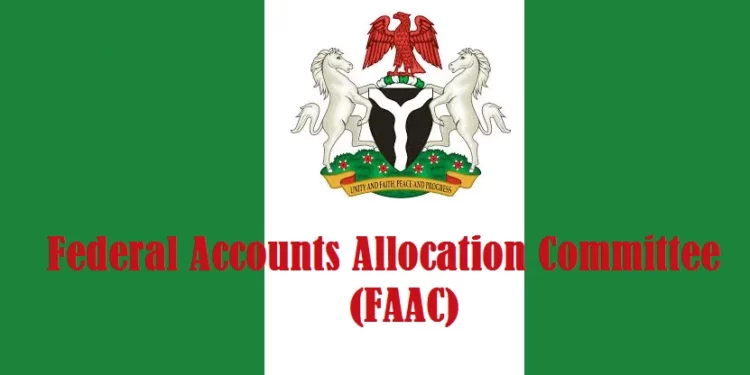
Allocation dips slightly from September as most states remain heavily dependent on federal transfers
The Federal Government, states and local governments shared a total of N2.094 trillion as revenue for October 2025, marginally lower than the N2.103 trillion distributed in September. The drop amounts to a N9 billion decline, representing a 0.43 per cent month-on-month decrease.
The revenue figures were disclosed after the Federation Account Allocation Committee (FAAC) meeting held in Abuja on Wednesday. A statement issued by Bawa Mokwa, Director of Press and Public Relations at the Office of the Accountant-General of the Federation, provided full details of the distribution.
According to the communiqué, the N2.094 trillion shared comprised N1.376 trillion in statutory revenue, N670.303 billion from Value Added Tax, and N47.870 billion from the Electronic Money Transfer Levy (EMTL).
Total gross inflow for October stood at N2.934 trillion. From this amount, the DMO said N115.278 billion was deducted as the cost of collection, while N724.603 billion went into transfers, intervention funds, refunds and savings.
Statutory revenue recorded a slight improvement. Gross statutory collections rose to N2.164 trillion, up by N36.832 billion from September’s N2.128 trillion. However, VAT inflows weakened significantly. Gross VAT dropped to N719.827 billion, a sharp fall of N152.803 billion compared to the N872.630 billion generated in September.
From the N2.094 trillion available for sharing, the Federal Government received N758.405 billion, states got N689.120 billion, while local government councils collected N505.803 billion. Oil-producing states received N141.359 billion as 13 per cent derivation.
Breakdown of the statutory component shows that out of N1.376 trillion, the Federal Government received N650.680 billion, states took N330.033 billion, and local governments got N254.442 billion. The derivation payment of N141.359 billion was also drawn from this pool.
For the N670.303 billion VAT distribution, the Federal Government received N100.545 billion. States were allocated N335.152 billion, while local governments got N234.606 billion.
The EMTL sharing showed that out of N47.870 billion, the Federal Government received N7.180 billion, states took N23.935 billion, and local governments got N16.755 billion.
FAAC noted improvements in petroleum profit tax, hydrocarbon tax, companies’ income tax on upstream operations, capital gains tax, stamp duties, oil and gas royalties, import duty, excise duty and common external tariff levies. Declines were recorded in VAT, EMTL and administrative fees.
The October revenue continues a recent pattern of monthly FAAC allocations surpassing N2 trillion, driven by strong oil receipts and robust remittances from major revenue-generating agencies. However, the slight dip from September underscores the volatility of VAT and EMTL inflows, which remain sensitive to consumer spending and electronic transaction volumes.
Meanwhile, findings from the 10th edition of the BudgIT State of States Report highlight the fiscal vulnerability of subnational governments. The report shows that 31 states rely on FAAC for at least 80 per cent of their revenue, reflecting severe pressure on state finances.
BudgIT noted that even states traditionally regarded as economically strong such as Lagos, whose FAAC share increased from N4.24 billion to N11.38 billion within a year are becoming increasingly dependent on federal transfers.
While 15 states posted more than 50 per cent growth in internally generated revenue (IGR), with Enugu leading the pack, only two states recorded negative growth, one of them being Kebbi. The organisation warned that heavy reliance on FAAC disincentivises states from improving IGR, adding that 29 states depended on FAAC for at least half of their total revenue, and 21 states relied on it for over 70 per cent.



